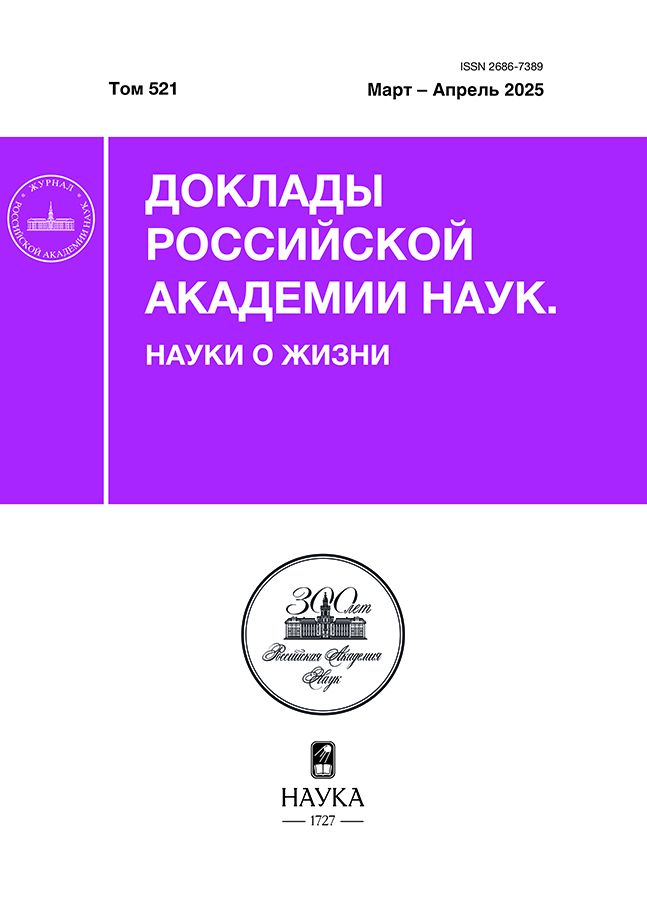Optimization of A549 cell transfection efficiency with a plasmid encoding the N-protein of the SARS-COV-2 virus
- Autores: Khramtsov Y.V.1, Lupanova T.N.1, Rosenkranz A.А.1,2, Georgiev G.P.1, Sobolev A.S.1,2
-
Afiliações:
- Institute of Gene Biology, RAS
- Lomonosov Moscow State University Moscow
- Edição: Volume 521, Nº 1 (2025)
- Páginas: 204-207
- Seção: Articles
- URL: https://cijournal.ru/2686-7389/article/view/684007
- DOI: https://doi.org/10.31857/S2686738925020064
- ID: 684007
Citar
Texto integral
Resumo
To test new antiviral drugs aimed at degrading the nucleocapsid protein (N-protein) of the SARS-CoV-2 virus, it is desirable to have cells expressing the N-protein, for which it is necessary to find conditions for the maximum achievable efficiency of cell transfection with a plasmid encoding this protein. For transfection, polyplexes were used consisting of a plasmid encoding the N-protein fused with the mRuby3 fluorescent protein and polyethyleneimine (PEI)-polyethylene glycol (PEG)-TAT peptide block copolymers. The dependence of the transfection efficiency of human lung adenocarcinoma A549 cells on the PEG/PEI and N/P ratios (the ratio of nitrogen in PEI to phosphate in DNA) was studied. Significant positive correlations were shown between transfection efficiency determined by flow cytometry, the N/P ratio, and the proportion of polyplexes sized 40–54 nm. The data obtained can serve as a basis for creating an animal model of lung cells transiently expressing the N protein of the SARS-CoV-2 virus.
Palavras-chave
Texto integral
Sobre autores
Y. Khramtsov
Institute of Gene Biology, RAS
Autor responsável pela correspondência
Email: alsobolev@yandex.ru
Rússia, Moscow
T. Lupanova
Institute of Gene Biology, RAS
Email: alsobolev@yandex.ru
Rússia, Moscow
A. Rosenkranz
Institute of Gene Biology, RAS; Lomonosov Moscow State University Moscow
Email: alsobolev@yandex.ru
Rússia, Moscow; Moscow
G. Georgiev
Institute of Gene Biology, RAS
Email: alsobolev@yandex.ru
Academician of the RAS
Rússia, MoscowA. Sobolev
Institute of Gene Biology, RAS; Lomonosov Moscow State University Moscow
Email: alsobolev@yandex.ru
Corresponding Member of the RAS
Rússia, Moscow; MoscowBibliografia
- Surjit M., Lal S. K. // Infect Genet Evol. 2008. V. 8. P. 397–405.
- Wu C., Zheng, M. // Preprints. 2020. 2020020247.
- Prajapat M., Sarma P., Shekhar N., et al. // Indian J Pharmacol. 2020. V. 52. P. 56.
- Bestion E., Halfon P., Mezouar S., et al. // Viruses. 2022. V. 14. 1507.
- Ulasov A. V., Khramtsov Y. V., Trusov G. A., et al. // Mol. Ther. 2011. V. 19. P. 103–112.
- Shahbazi S., Haghighipour N., Soleymani S., et al. // Biotechnology letters. 2018. V. 40. P. 923–931.
- Hall A., Lachelt U., Bartek J., et al. // Mol. Ther. 2017. V. 25. P. 1476–1490.
- Трусов Г. А., Уласов А. В., Белецкая Е. А., и др. // ДАН. 2011. Т. 437. С. 266–268.
- Perrine T. D., Landis W. R. // J. Polym. Sci. A1. 1967. V. 5. P. 1993–2003.
- Kunath K., von Harpe A., Petersen H. et al. // Pharm. Res. 2002. V. 19. P. 810–817.
- Gong X. W., Wei D. Z., He M. L. et al. // Talanta. 2007. V. 71. P. 381–384.
Arquivos suplementares












